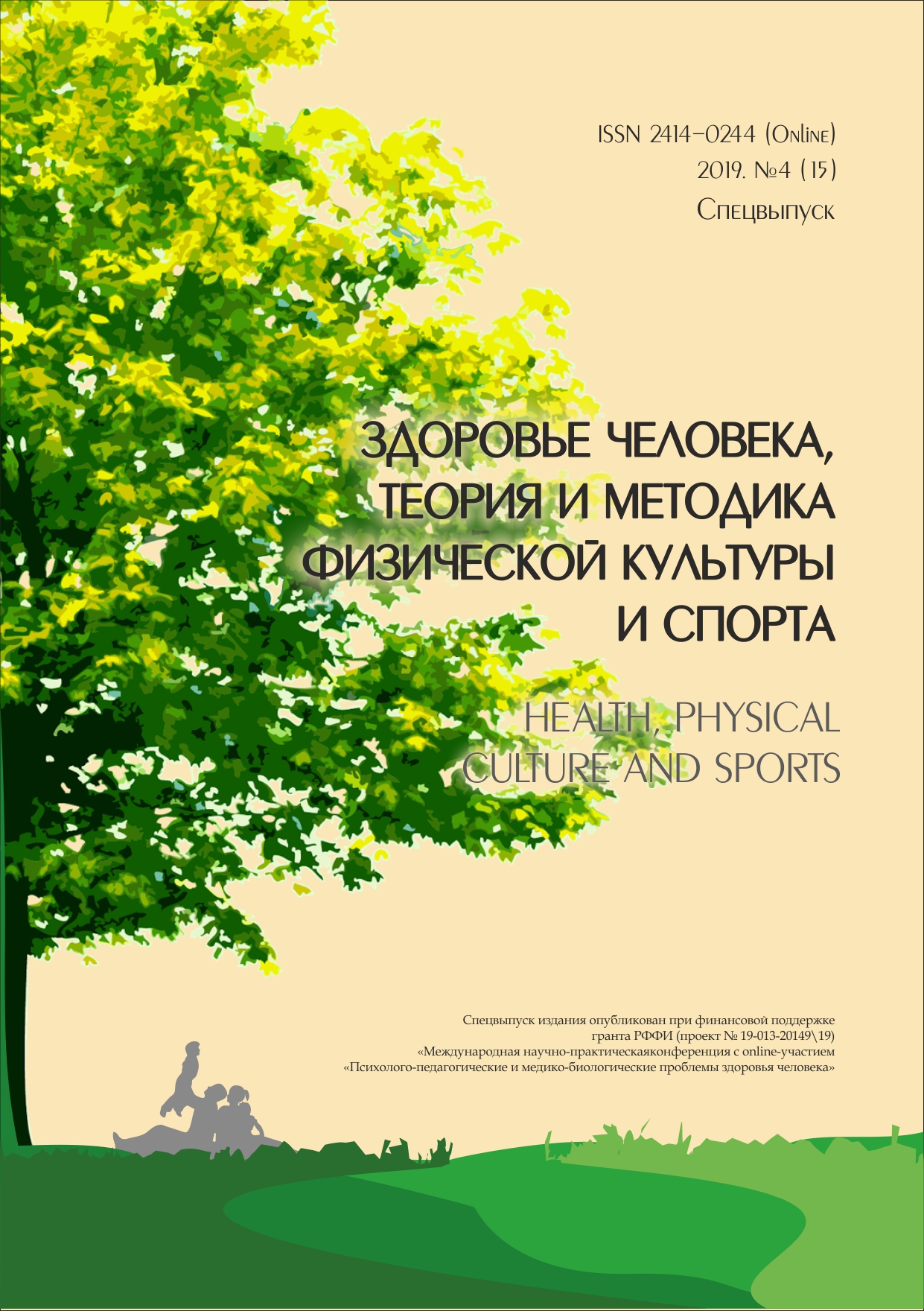OPTIMAL TIME FOR REST DURING MOVEMENT ON THE CLIMBING TRACK
Abstract
The article presents result of year’s research in competitive rock-climbing with highqualifications in discipline “hard climbing”. Researches based on man’s efficiency indicates on differentstages of World’s Cup and World’s Championships during 2012–2018 years. To sum up, more than1100 individual starts on 53 big international tournaments was collected and analyzed. Differenttemporal and spatial climbing characteristics [9], has been studied, including pause’s influences onpassing results of short competitive track. Level of connection between time of the rest and resultmoderate R = 0,36, and highly significant p << 0,001. Correlation is logarithmic depend betweenhighly active growing in first half of the track and slightly growing in second one. In conclusion, mostof athletes (90 %) use 56 seconds long pauses (on tracks with 42 moves length) including grow of reststabilized and does not influence on the result. Pauses 30–40 seconds long further the way in the TopGroup. During researches regression model “rest time — result” was made. This model allows to findcomponent’s optimum and area. Model may be used only for short competitive tracks. This modelhelps in corrections of temporal and spatial climbing characteristics during training process andcalculate optimal indicate of rest pauses during making passing track tactical plan on internationalcompetition. The studies performed allowed us to establish the laws of connection between recoverytime and the result of passing a short competitive route. The degree of communication is moderate R= 0.36 and highly significant p = 2.3E-07. A regression model is constructed that allows calculatingthe optimum zone of the component depending on the length of the sports track. The research resultscan be used in preparation for international starts, as well as directly during the competition whendrawing up a tactical performance plan.
Downloads
References
Кёстермейер Г., Примеров В. П. Спортивное скалолазание. Первое приближение. Екатеринбург, 2010. 112 с.
Ломовцев Д. Ю., Кравчук Д. А. Оптимизация тренировочного процесса скалолазов, специализирующихся в лазании на трудность, на основе комплексного анализа уровня физической подготовленности // Омский научный вестник. 2012. № 4. С. 247–249.
Baláš J., et al. 2012. Hand-arm strength and endurance as predictors of climbing performance //European Journal of Sport Science. 12 (1). Р. 16–25.
España-Romero V., Ortega F. B., García-Artero E., Gutiérrez A. 2006. Performance, antrophometrics and muscle strength characteristics in spanish elite rock climbers. Revista Española e Iberoamericana de Medicina de la Educación Física y el Deporte. 15 (4). Р. 176–183.
MacLeod D., Sutherland D. L., Buntin L., Whitaker A., Aitchison T., Watt I., et al. 2007. Physiological determinants of climbing-specific finger endurance and sport rock climbing performance // Journal of sports sciences. 25 (12). Р. 1433–1443.
Анохова А. А., Сопов В. Ф. Применение комплексной программы обучения психической саморегуляции в скалолазании // Современные проблемы психологии физической культуры и спорта: сб. науч. тр. М., 2016. С. 232–243.
Бочавер К. А., Довжик Л. М., Тер-Минасян А. А. К вопросу о концентрации внимания в спортивном скалолазании // Спортивный психолог. 2015. № 1 (36). С. 55–62.
Orth D., Kerr G., Davids K., Seifert L. 2017. Analysis of Relations between Spatiotemporal Movement Regulation and Performance of Discrete Actions Reveals Functionality in Skilled Climbing. [Electronic resource]. URL: https://www.frontiersin.org/articles/10.3389/fpsyg.2017.01744/full
Котченко Ю. В. Сложное лазание: Теория соревновательного процесса. Симферополь: Научный мир, 2018. 288 с.
Скалолазание и наука. Категории трасс [Электронный ресурс]. URL: http://rcrs.info/category/kategorii-trass/
An author should not normally publish manuscripts describing essentially the same research in multiple journals or publication venues. Such redundant publication is generally considered to constitute unethical publishing behavior, and if discovered may result in a manuscript under consideration being rejected, or a published article being retracted.
Authors of manuscripts reporting on original research should present an accurate account of the work performed, accompanied by an objective discussion of its significance. Underlying data should be represented accurately in the manuscript. The manuscript should contain sufficient detail and references to permit others to replicate the work. The fabrication of results and the making of fraudulent or knowingly inaccurate statements constitute unethical behavior and may be cause for rejection or retraction of a manuscript or published article.





